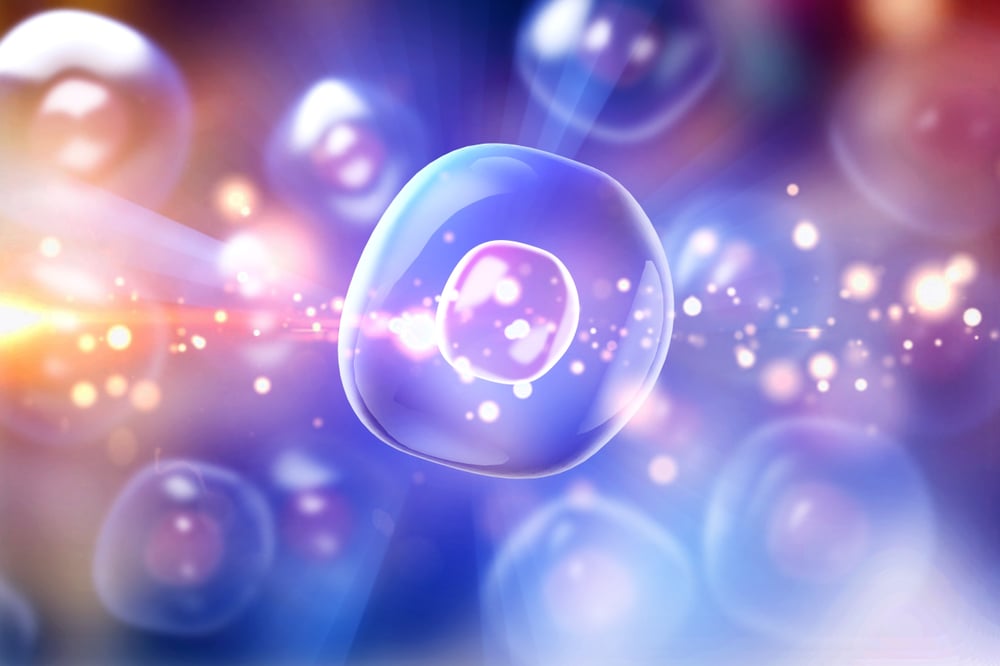Posted 12 May 2025 - 04:00 PM
Researchers publishing in Aging Cell have found a biochemical pathway that leads skin cells to become senescent along with a potential target for future therapies.
Fibroblasts have a purpose
Dermal fibroblasts are common subjects in aging research, particularly in the context of senescence. These cells have a critical purpose: they are responsible for maintaining the integrity and collagen of the skin [1]. When these cells become senescent, the skin becomes visibly older, becoming thinner and saggy [2].
Targeting the fundamental factors involved in senescence has yielded some results in early-stage research. For example, p53, which is associated with tumor suppression, is a key player in senescence [4], and inhibiting this protein has been found to reduce senescence [5]. However, these fundamental factors serve critical functions, and simply attempting to deplete them is likely to do more harm than good and has never been demonstrated to have broad benefits in later-stage research.
Another of these key factors is USP7, which is responsible for protein maintenance. Upregulating the USP7/p300 pathway increases p53 and activates another well-known senescence factor, p21 [6]. Turning off USP7 kills off senescent cells (a senolytic effect) [7] but causes Drosophila flies to die more quickly [8].
These researchers may have found a fundamental factor that is more amenable to targeting. Sequestosome1, also known as p62, is crucial throughout the human body; depletion is linked to neurological problems and perhaps the earliest stages of Alzheimer’s [9], and it is even vital in fighting pathogens [10]. These researchers, therefore, investigated whether restoring this important protein to youthful levels may have benefits against senescence in the skin.
A senescence-preventing protein
The Kyoto Encyclopedia of Genes and Genomes (KEGG) confirmed that p62 in the skin is indeed depleted with age in human beings. These findings were recapitulated in mice; while the senescence-related biomarkers p53, p21, and p16 were all increased in older mouse skin, p62 levels decrease instead. Driving cells senescent through radiation or cancerous oncogene activation also decreases p62.
To verify p62’s importance, the researchers created a mouse model that does not express it in keratinocytes, the cells that bind the dermis and the outer epidermal layer. Unsurprisingly, the skin of these mice aged quickly compared to unmodified counterparts, rapidly becoming wrinkled and thin; the skin of young p62-less mice was roughly as thin as that of old wild-type mice. The inflammatory biomarkers associated with senescence, including interleukins and TNF-α, were also dramatically increased, giving young mice inflammation similar to old wild-type mice.
These findings were recapitulated in cells. Fibroblasts and keratinocytes that did not produce p62 became senescent under UV radiation much more quickly than their unmodified counterparts, raising both USP7 and p53. Cells that overexpressed p62, on the other hand, were much more resilient, becoming senescent at roughly half the rate of unmodified cells and expressing far less p53, p21, and p16.
The researchers suggested that these effects are related to the crucial cellular maintenance process known as autophagy. USP7 levels are controlled by protein degradation in the lysosome, an autophagic process. Reducing autophagy, therefore, causes USP7 to rise. Further work found that p62 has a direct, binding effect on USP7, restraining its senescence- promoting effects. Mutations in the genes responsible for either compound, unsurprisingly, prevented this interaction and thus promoted senescence.
These findings make p62 a very tempting target for future research. Unlike with other fundamental proteins, it is the lack of p62 that is a cause of senescence. The goal is to replace a dwindling necessity, not remove one in an effort to kill senescent cells. If p62 levels can be maintained, it may be possible to reduce the rate at which skin cells become senescent, thus keeping skin healthier for longer. However, this is still very early-stage work, no p62 promoter has been suggested, and it is unknown what increasing p62 systemically or in skin cells may do to mice or to people.
We would like to ask you a small favor. We are a non-profit foundation, and unlike some other organizations, we have no shareholders and no products to sell you. All our news and educational content is free for everyone to read, but it does mean that we rely on the help of people like you. Every contribution, no matter if it’s big or small, supports independent journalism and sustains our future.
Literature
[1] Bahudhanapati, H., Tan, J., Apel, R. M., Seeliger, B., Schupp, J., Li, X., … & Kass, D. J. (2024). Increased expression of CXCL6 in secretory cells drives fibroblast collagen synthesis and is associated with increased mortality in idiopathic pulmonary fibrosis. European Respiratory Journal, 63(1).
[2] Zhang, J., Yu, H., Man, M. Q., & Hu, L. (2024). Aging in the dermis: Fibroblast senescence and its significance. Aging Cell, 23(2), e14054.
[3] Xu, L. W., Sun, Y. D., Fu, Q. Y., Wu, D., Lin, J., Wang, C., … & Li, Q. F. (2024). Unveiling senescence-associated secretory phenotype in epidermal aging: insights from reversibly immortalized keratinocytes. Aging (Albany NY), 16(18), 12651.
[4] Wu, D., & Prives, C. (2018). Relevance of the p53–MDM2 axis to aging. Cell Death & Differentiation, 25(1), 169-179.
[5] Kim, J., Nakasaki, M., Todorova, D., Lake, B., Yuan, C. Y., Jamora, C., & Xu, Y. (2014). p53 Induces skin aging by depleting Blimp1+ sebaceous gland cells. Cell death & disease, 5(3), e1141-e1141.
[6] Zeng, M., Zhang, X., Xing, W., Wang, Q., Liang, G., & He, Z. (2022). Cigarette smoke extract mediates cell premature senescence in chronic obstructive pulmonary disease patients by up-regulating USP7 to activate p300-p53/p21 pathway. Toxicology Letters, 359, 31-45.
[7] He, Y., Li, W., Lv, D., Zhang, X., Zhang, X., Ortiz, Y. T., … & Zhou, D. (2020). Inhibition of USP7 activity selectively eliminates senescent cells in part via restoration of p53 activity. Aging cell, 19(3), e13117.
[8] Cui, L., Song, W., Zeng, Y., Wu, Q., Fan, Z., Huang, T., … & Fan, X. (2020). Deubiquitinase USP7 regulates Drosophila aging through ubiquitination and autophagy. Aging (Albany NY), 12(22), 23082.
[9] Ramesh Babu, J., Lamar Seibenhener, M., Peng, J., Strom, A. L., Kemppainen, R., Cox, N., … & Wooten, M. W. (2008). Genetic inactivation of p62 leads to accumulation of hyperphosphorylated tau and neurodegeneration. Journal of neurochemistry, 106(1), 107-120.
[10] Lee, Y. J., Kim, J. K., Jung, C. H., Kim, Y. J., Jung, E. J., Lee, S. H., … & Kwon, Y. T. (2022). Chemical modulation of SQSTM1/p62-mediated xenophagy that targets a broad range of pathogenic bacteria. Autophagy, 18(12), 2926-2945.
View the article at lifespan.io










































